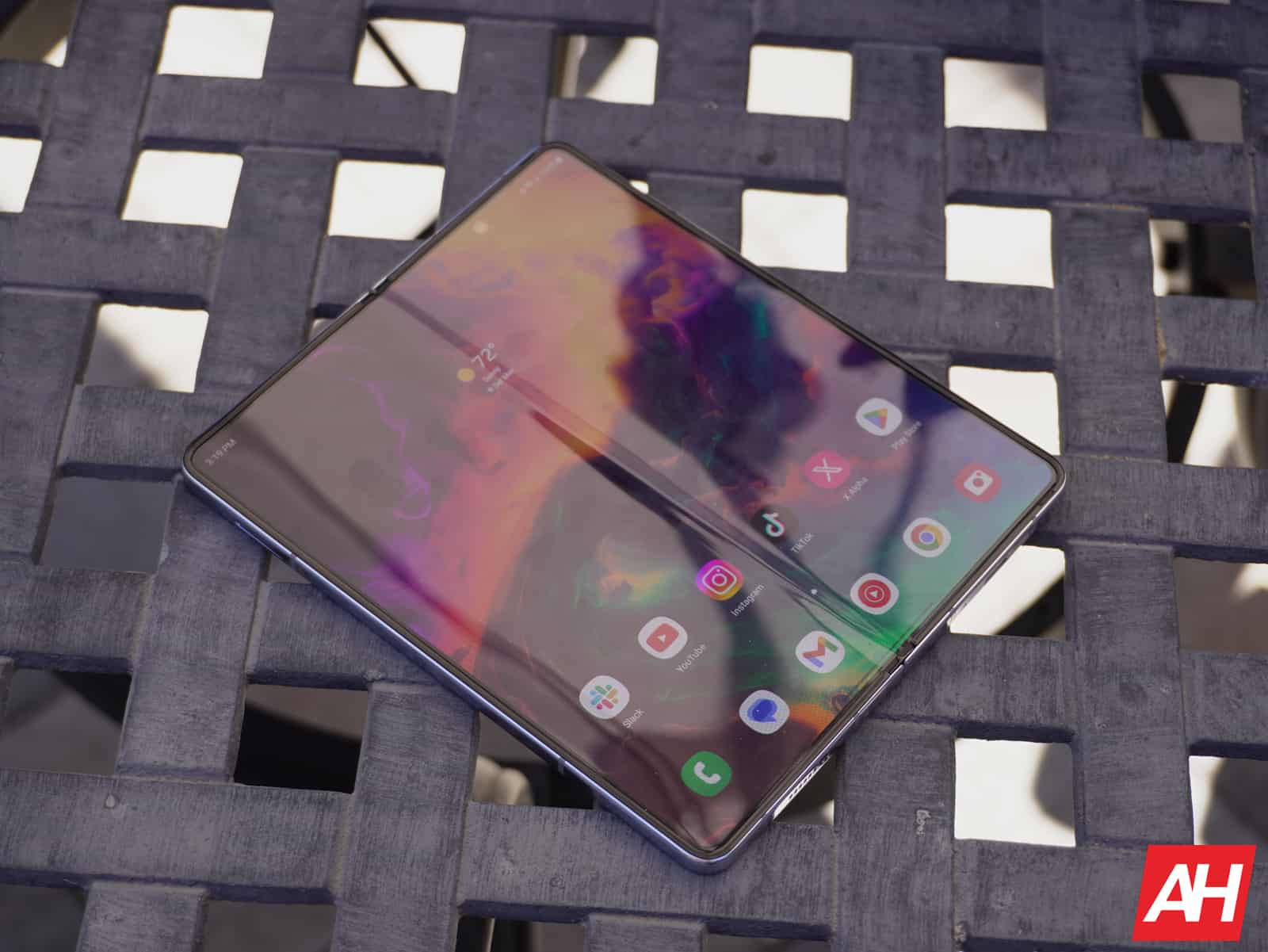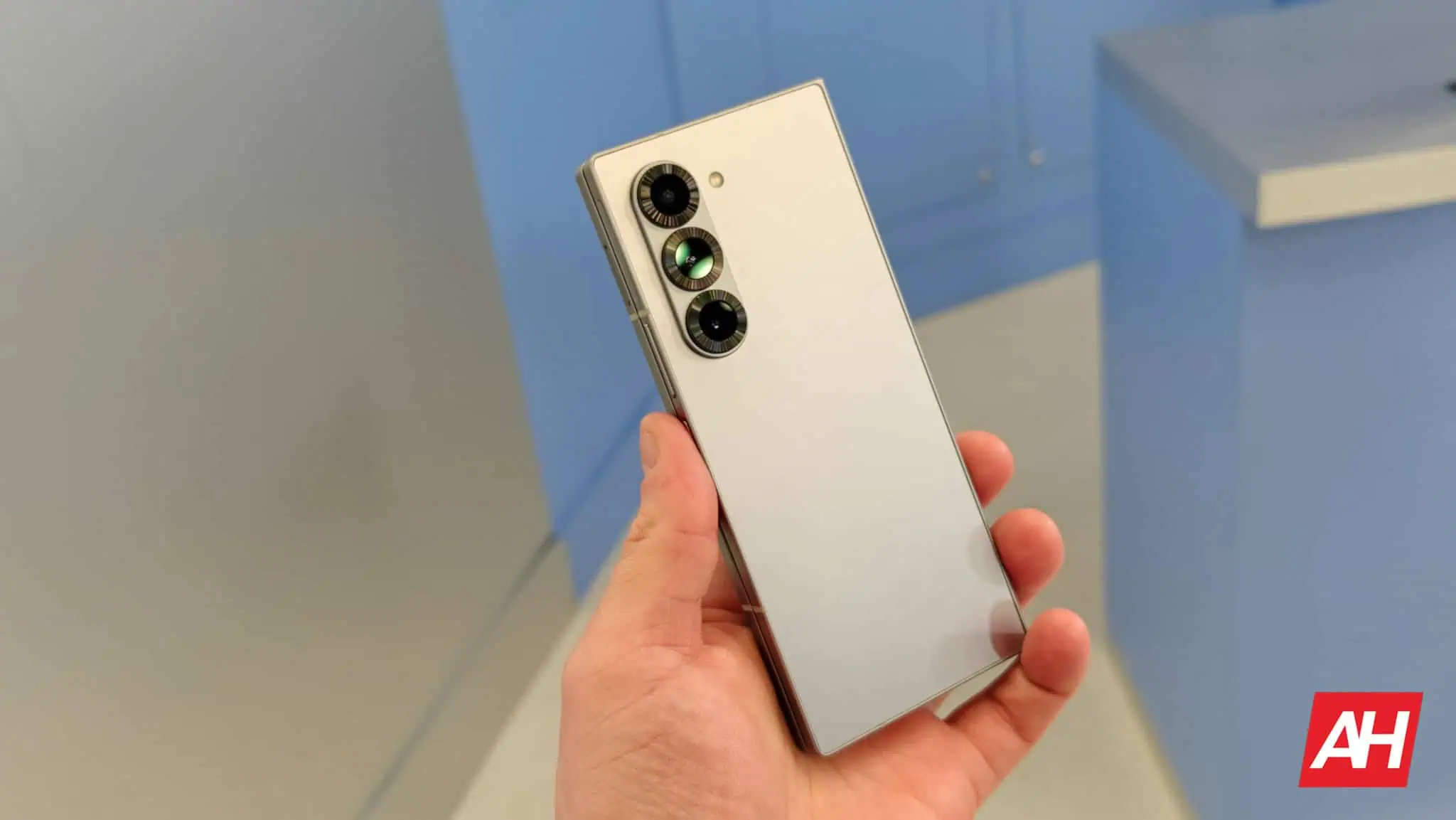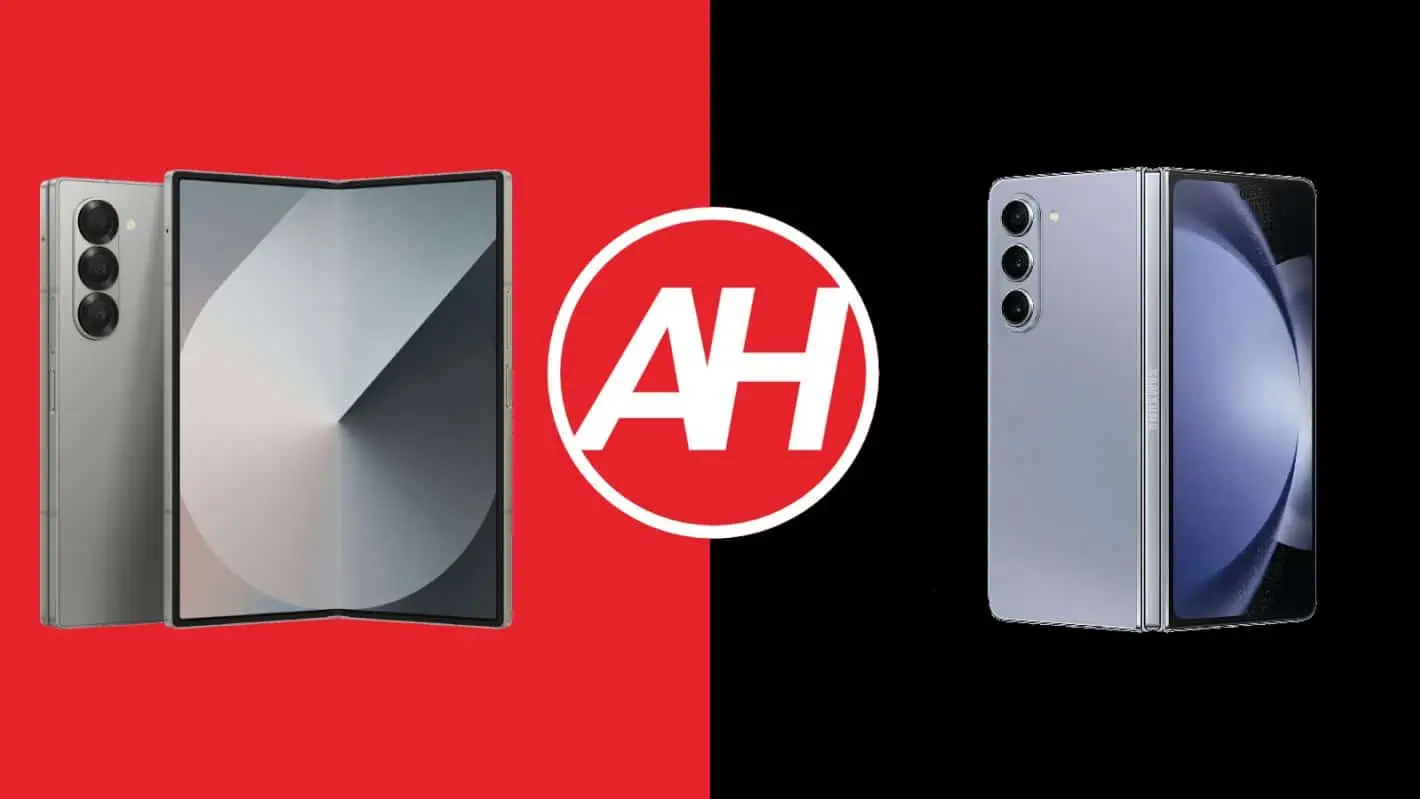Samsung has recently announced its new flagship foldable, the Galaxy Z Fold 6, along with a bunch of other devices. That phone is actually quite similar to its predecessor, even though there are differences, of course. In this article, we’ll compare the Samsung Galaxy Z Fold 6 vs Samsung Galaxy Z Fold 5. Do note that we have kicked off the Galaxy Z Fold 6 review process, but it will take time. So we are basing this comparison on details provided by the company and our initial impressions. For more information, the review is coming.
With that being said, as per usual, we’ll first list the specifications of these two phones. Following that, we will compare the devices across a number of categories. We’ll be comparing their designs, displays, performance, battery life, cameras, and audio output. Let’s get to it, shall we?
Specs
Samsung Galaxy Z Fold 6 & Samsung Galaxy Z Fold 5,, respectively
– Screen size (main):
7.6-inch Foldable Dynamic LTPO AMOLED 2X display (120Hz, HDR10+, 2,600 nits)
7.6-inch Foldable Dynamic AMOLED 2X display (120Hz, HDR10+, 1,750 nits)
– Screen Size (cover):
6.3-inch Dynamic LTPO AMOLED 2X (120Hz, 1,600 nits)
6.2-inch Dynamic AMOLED 2X (120Hz, 1,750 nits)
– Display resolution (main):
1856 x 2160
1812 x 2176
– Display resolution (cover):
2376 x 968
2316 x 904
– SoC:
Qualcomm Snapdragon 8 Gen 3 for Galaxy
Qualcomm Snapdragon 8 Gen 2 for Galaxy
– RAM:
12GB (LPDDR5X)
12GB (LPDDR5)
– Storage:
256GB/512GB/1TB (UFS 4.0)
– Rear cameras:
50MP (wide, f/1.8 aperture, Dual Pixel PDAF OIS), 12MP (ultrawide, 123-degree FoV), 10MP (telephoto, 3x optical zoom)
– Front cameras:
4MP (under display, main display, f/1.8 aperture), 10MP (cover display, f/2.2 aperture)
– Battery:
4,400mAh
– Charging:
25W wired, 15W wireless, 4.5W reverse wireless (no charger)
– Dimensions (unfolded):
153.5 x 132.6 x 5.6 mm
154.9 x 129.9 x 6.1mm
– Dimensions (folded):
153.5 x 68.1 x 12.1 mm
154.9 x 67.1 x 13.4mm
– Weight:
239 grams
253 grams
– Connectivity:
5G, LTE, NFC, Wi-Fi, USB Type-C, Bluetooth 5.3
– Security:
Side-facing fingerprint scanner
– OS:
Android 14 with One UI 6.1.1
Android 13 with One UI
– Price:
$1,899+
$1,799+
– Buy:
Galaxy Z Fold 6 (Samsung / Best Buy)
Galaxy Z Fold 5 (Samsung)
Samsung Galaxy Z Fold 6 vs Samsung Galaxy Z Fold 5: Design
When it comes to the design, the two phones are quite similar. The Galaxy Z Fold 6 comes with sharper corners, though the general design language remains the same. They both have a flat frame all around. The Galaxy Z Fold 6 is wider, though, while being ever so slightly shorter. It is also thinner and considerably lighter. The phone weighs 239 grams compared to 253 grams of the Galaxy Z Fold 5.
Both handsets have an under-display camera on the main panel and a display camera hole on the cover panel. The Galaxy Z Fold 6 is finally wider, and that makes typing on the cover display a bit easier. It’s still not as wide as some of its competitors, and it’s narrower than regular handsets when folded. Samsung used (Armor) aluminum for the frames of both devices, while you’ll find glass on their backs.
It is worth noting that the Galaxy Z Fold 6 has a stiffer hinge than its predecessor. That’s a good thing, as it’s more satisfying to use, and using the phone in a half-folded state (various angles) is easier now. The Galaxy Z Fold 6 has IP48 certification for water resistance, while the Galaxy Z Fold 5 offers an IPX8 rating for water resistance. The in-hand feel is slightly different, but not all that much. Both smartphones have three vertically aligned cameras on the back, in the top-left corner. Those cameras are a part of one camera island, and even though the ones on the Galaxy Z Fold 6 may seem larger, the same camera hardware is used.
Samsung Galaxy Z Fold 6 vs Samsung Galaxy Z Fold 5: Display
The Galaxy Z Fold 6 includes a 7.6-inch 1856 x 2160 foldable Dynamic AMOLED 2X panel. That display offers up to 120Hz refresh rate, and HDR10+ content is supported. The peak brightness here is 2,600 nits. This display has a 91% screen-to-body ratio and a 374 ppi. The cover display, on the other hand, is a 6.3-inch unit with a 2376 x 968 resolution. That is a Dynamic AMOLED 2X panel with a refresh rate of up to 120Hz. The peak brightness here is 1,600 nits, while the Gorilla Glass Victus 2 protects the display. This panel offers a 410 ppi.

The Galaxy Z Fold 5, on the other hand, includes a 7.6-inch display too, but with an 1812 x 2176 resolution. It’s narrower. This is also a foldable Dynamic AMOLED 2X display with a 120Hz refresh rate. It also supports HDR10+ content and offers a 91.1% screen-to-body ratio. The cover display on the phone measures 6.2 inches. It is a Dynamic AMOLED 2X panel with a refresh rate of up to 120Hz and Corning Gorilla Glass Victus 2 protects it.
All four of these displays are quite good. In fact, they’re very similar, other than the aspect ratio difference. The Galaxy Z Fold 6 certainly has a more comfortable cover display to use, as it’s wider and closer to displays on regular smartphones. All four displays are quite vivid and have good viewing angles. Those panels also do get bright enough, although they’re not the brightest around. The touch response is good, and they feel good to use. It’s also worth noting that while both foldable panels have quite noticeable creases, that crease is more noticeable on the Galaxy Z Fold 5.
Samsung Galaxy Z Fold 6 vs Samsung Galaxy Z Fold 5: Performance
The Samsung Galaxy Z Fold 6 is fueled by the Snapdragon 8 Gen 3 for Galaxy processor. That is an overclocked variant of the Snapdragon 8 Gen 3, and the most powerful chip from Qualcomm. The device also comes with 12GB of LPDDR5X RAM and UFS 4.0 flash storage. The Galaxy Z Fold 5, on the flip side, is fueled by the Snapdragon 8 Gen 2 for Galaxy chip. That is an overclocked variant of the Snapdragon 8 Gen 2, and also a 4nm processor. This phone has the same amount of RAM, though it’s LPDDR5 RAM. Both smartphones use UFS 4.0 flash storage.
So, both smartphones are well-equipped in terms of performance-related specs. The Galaxy Z Fold 6 is more powerful, technically, but truth be said, from what we’ve seen thus far, you won’t really notice that day-to-day. The Snapdragon 8 Gen 2 was Qualcomm’s flagship chip for last year, and it does a fantastic job still. Both smartphones are very snappy when it comes to general usage (based on our initial impressions with the Galaxy Z Fold 6), regardless if we’re talking about opening apps and multitasking or browsing and image editing. They both get the job done and then some. Plus Samsung’s software is well-adapted for foldables.
We haven’t really tested the gaming aspect of the Galaxy Z Fold 6 just yet, you’ll have to wait for our full review for that. We are, however, expecting similar results to the Galaxy Z Fold 5. That device handles games just fine, as it should considering its specifications. That goes for even the most demanding games on the Google Play Store. We’ll see if the Galaxy Z Fold 6 does a similar job, the review is coming.
Samsung Galaxy Z Fold 6 vs Samsung Galaxy Z Fold 5: Battery
Both of these smartphones include a 4,400mAh battery on the inside. The Galaxy Z Fold 5 was not particularly impressive in the battery department. Even when we didn’t use the main display most of the time, the phone didn’t make it up to 7 hours of screen-on-time. You can get there, but you’ll have to be very conservative. When we used the main display a bit more, like half the time, it was close to 6 hours of screen-on-time or less.
The Galaxy Z Fold 6 could bring some improvements in that regard, so we’ll see, but we didn’t properly test its battery life just yet. In all honesty, we’re expecting a similar performance to its predecessor. There are foldables out there with considerably larger batteries out there, but perhaps Samsung did some of its software magic here. Your experience with the Galaxy Z Fold 5 could have been different, of course, there are a lot of variables included here.
When it comes to charging, the two phones are on the same level. They both support 25W wired, 15W wireless, and 4.5W reverse wireless charging. What’s also the same is the fact that neither smartphone ships with a charger in the box. It took the Galaxy Z Fold 5 around 80 minutes to fully charge with a compatible 25W charger, and over two hours with wireless charging. The same will be the case with the Galaxy Z Fold 6, by the way.
Samsung Galaxy Z Fold 6 vs Samsung Galaxy Z Fold 5: Cameras
The camera hardware remains unchanged on the Galaxy Z Fold 6 compared to its predecessor. The phone includes the same cameras on both the front and the back. A 50-megapixel main camera (f/1.8 aperture lens, dual pixel PDAF, OIS) sits on the back as the main camera. A 12-megapixel ultrawide camera (123-degree FoV, f/2.2 aperture lens) sits on the back too. The third camera on the back of both phones is a 10-megapixel telephoto shooter (3x optical zoom, OIS, f/2.4 aperture lens).

Under the main display on both phones sits a 4-megapixel unit (f/1.8 aperture lens, 2.0um pixel size). On the cover displays you’ll find a 10-megapixel selfie camera (f/2.2 aperture lens, 1.22um pixel size). We were hoping to see an improvement on the Galaxy Z Fold 6 in terms of cameras, as some of the competition offers considerably better camera hardware. That did not happen, however, Samsung decided to stick with the same setup this time around.
It’s too early to comment on the camera performance of the Galaxy Z Fold 6. While we did take some initial camera samples, we’re still not ready to comment on them. You’ll have to wait for our full review for that. Still, we expect the two phones to perform rather similarly considering the same hardware, though there will be some differences to speak of, of course.
Audio
Both of these phones have stereo speakers. We didn’t really get to test them properly just yet, but the difference doesn’t seem to be big at first. In fact, it’s possible the exact same hardware is used. We’ll know more after we properly test them and will talk more about them in our review. The sound is very good from both phones, though.
There is also no audio jack included here, which means you will need to use their Type-C ports if you’d like to hook up your stereo speakers. If you’d like to go wireless, do note that both smartphones support Bluetooth 5.3.

